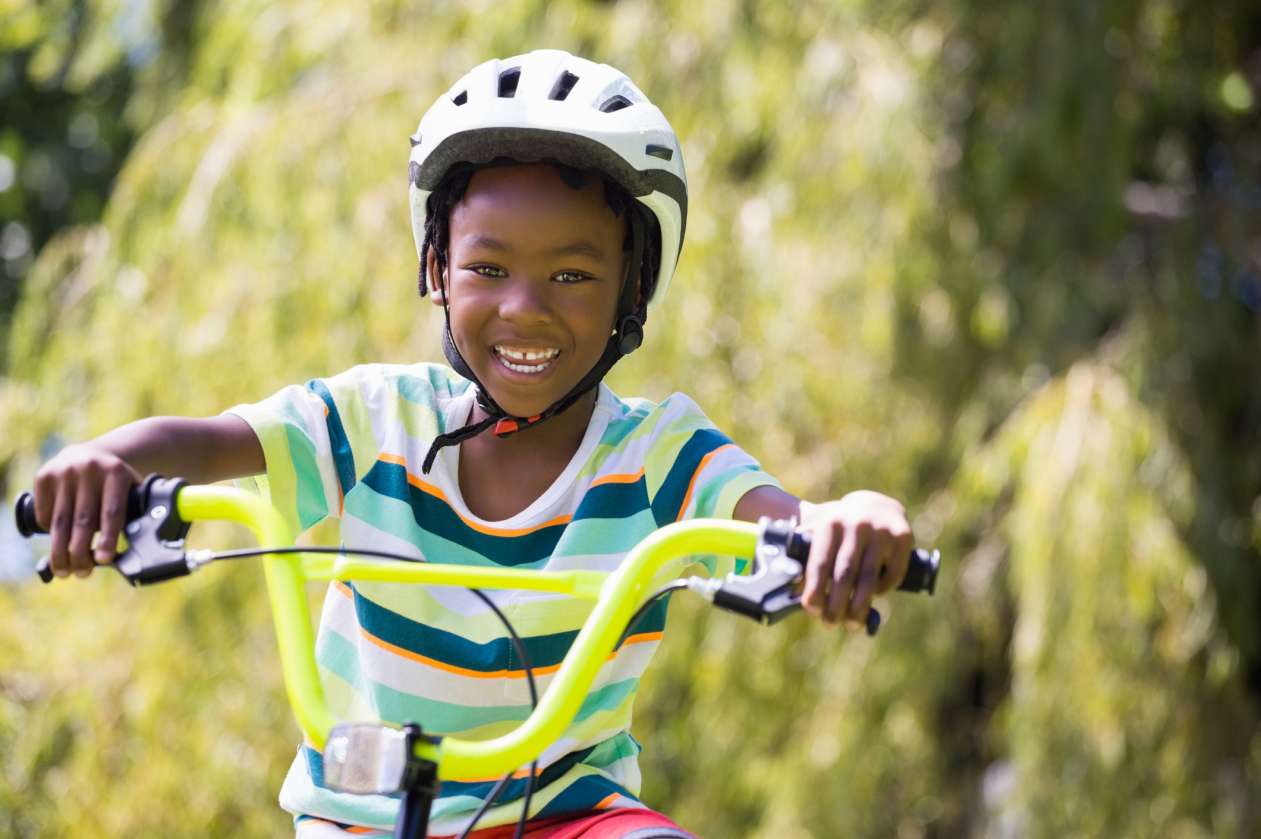
3 steps to prep your child for back-to-school bicycling
Editor’s note: This article was originally published on Aug 24, 2015.
With the back-to-school countdown ticking away, chances are you’ve already got your child’s lunch boxes, clothes, and supplies all prepped. But what about their bicycles?
According to a 2015 Parachute Canada and FedEx survey, 30 percent of Canadian families use active transportation to get their children to school, which means late summer is the ideal time to brush up on bike handling skills and to make sure your child’s ride is in tip-top shape. If you’re among the 70 percent of families whose children take the bus or are driven to school, the brand-new school year might inspire you to make a pledge to try biking to school with your child. These three steps get you off on the right foot (or pedal stroke) to bike-to-school success.
1. Make sure your child’s bicycle is mechanically sound
If you spent a lot of time this summer cycling with your family, it’s inevitable that some wear and tear has occurred on your child’s bicycle. Do a thorough inspection of their bicycle, including checking brakes, tire pressure, gears and bolts (this inspection should be done every time your child goes for a bike ride). Chances are your child has grown over the summer, so double check that their saddle is the right height and adjust as necessary. A few finishing safety touches, like a bell, lights, and reflectors ensure your child is both seen and heard when they are on the road.
By teaching your child the basics of bike maintenance, you’ll inspire your child to take better care of their bike, says Alex Kelly, national spokesperson for Parachute Canada. “They’ll develop a sense of pride and ownership when you really play up their bikes.”
2. Start a helmet habit
Safe cycling starts with ensuring your child has a properly fitting helmet in good condition. Check for visible damage, like cracks or worn straps. Be clear with your children on how their helmet should fit, using 2V1 as a guideline. “Make fitting your helmet part of your pre-ride inspection,” says Kelly.
When not on their noggin, your child’s helmet should be stored out of the sun and rain, as the elements can degrade the shock-absorbing foam. This means when your child gets to school, their helmet should be hung on a hook indoors, not on their bike’s handlebars.
Kelly encourages parents to get kids to speak up if their helmets have been accidentally dropped on the ground or if they’ve fallen off their bikes. According to CSA Group, bicycle helmets are not designed for multiple crashes and should be replaced after any impact.
3. Plan (and practice) your route
Speeding cars, traffic, and lack of sidewalks or bike lanes were among the top bike-to-school safety concerns of parents in Parachute Canada’s active transportation survey. When plotting your child’s school commute, look for well-lit streets with designated bike paths or streets that you know will have less traffic. In some cities like Toronto and Calgary, children may ride on the sidewalks, permitted they share the sidewalk courteously with pedestrians. Kelly stresses that just because your child is on a sidewalk, it doesn’t mean that they don’t have to look for cars. Intersections and driveways should be approached with caution.
Have touch points along the route so that if your child has a problem during their ride to school, they have a safe place to stop and call for help. This could be a neighbour’s house, library, or other public place where they can seek shelter if the weather turns stormy, they have a mechanical problem with their bike, or if they’re too tired to keep riding.
Once your route is planned, head out for a family ride, which offers an ideal way to assess your child’s bike-to-school readiness.
“On these test rides, get your children thinking critically about safety,” advises Kelly, which means that kids should be aware of their surroundings while they are cycling, obeying traffic signals, and using proper hand signals.
Kelly notes that kids all develop differently, and there isn’t an age guideline for when your child could be ready to ride to school on their own. “Consider their age and stage,” says Kelly, noting an eight-year-old may be able to physically cover the distance, but might not be mature enough to react safely in high-traffic situations.
Bonus: Helpful ABCs for back-to-school riding
Anatomical fit: Buy a child-sized backpack with an anatomical fit to prevent shoulder or back strain. Adjustable straps and chest buckles prevents their pack from slipping.
Big books at home: When filled, your child’s backpack should not weigh more than 10 to 15 percent of their body weight. Leave heavy textbooks at home or school. Kids with a heavy course load who need to bring books home should consider using panniers or baskets.
Clean clothes: Leave a spare change of clothes at school just in case it rains during your child’s ride to school.
Biking to school is a milestone in both physical ability and independence for your child—and an active healthy way to kick off the school year.






Thank you. This totally worked for both my daughters. So brilliant to see a kid ride for the first time!
Love this! Thank you for sharing!
There *is* an age when children are capable of biking, or walking, themselves to school. For most kids, they should be supervised until at least age 9 because they lack the brain development to judge distance and speed of traffic before age 9 on average.
It’s also highly recommended that children – and parents – take a bike course to learn how to ride safely. In most municipalities there are rules about biking on the sidewalk and in lots of places even kids aren’t allowed to ride on the sidewalk, so knowing how to bike on the road becomes critical. In Canada, CAN-BIKE courses can teach kids over age 9 and adults how to ride on the road. In the US, the League of American Bicyclists has courses as well.